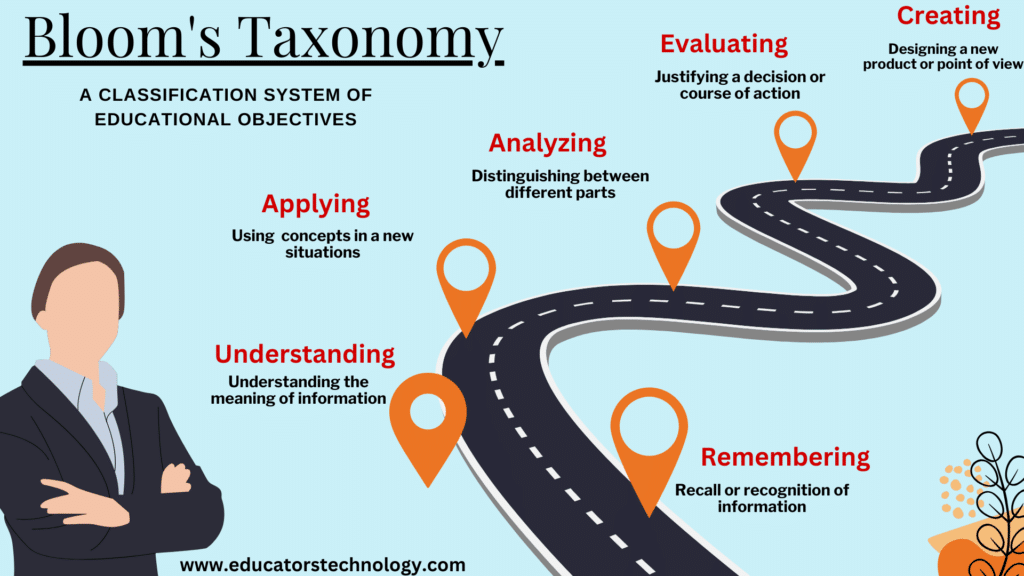Some ideas in education age well. Bloom’s Taxonomy is one of them.
Originally developed in 1956 by Benjamin Bloom and his colleagues, Bloom’s Taxonomy was introduced as a framework to classify educational learning objectives. It outlined six levels of cognitive skills: Knowledge, Comprehension, Application, Analysis, Synthesis, and Evaluation.

This model was intended to guide teachers in designing lessons and assessments that go beyond rote memorization, moving students toward higher-order thinking. Now, I know what some might say: That was the pre-internet era. The pre-AI era. Things have changed.
Of course, things have changed. But I would argue that the way humans learn hasn’t changed as much as people think.
Many of the learning theories that emerged long before the digital age remain as relevant as ever. They were not created to fit a specific technological moment. They were created to capture something much deeper — the cognitive processes that underpin learning itself.
These are not theories with an expiration date.
And those who dismiss them just because they come from a pre-digital world, in my view, are missing the whole point.
Bloom’s Taxonomy Was Never Static
Interestingly, Bloom’s Taxonomy itself has evolved. In 2001, it was revised by Anderson and Krathwohl to reflect a more dynamic view of learning. The categories were changed from nouns to verbs, and the hierarchy was reordered: Remember, Understand, Apply, Analyze, Evaluate, and Create.
Later, educators started talking about Digital Bloom’s Taxonomy, mapping digital activities to these cognitive levels. Tasks like blogging, podcasting, video creation, or coding found their place within Bloom’s framework.
And now we’re facing yet another shift.
With AI transforming the way we access information, complete tasks, and even generate content, I believe there is a need to revisit Bloom’s Taxonomy once again, not to discard it, but to rethink it in light of this new reality.
This is a project I am currently working on: developing what I call Bloom’s Taxonomy for AI. My aim is to explore how AI tools interact with different levels of thinking, where they support learning, and where they risk short-circuiting it.
Critique of Bloom’s Taxonomy
Like any other learning theory, Bloom’s Taxonomy has not been without its critics. Over the years, researchers have pointed out several limitations. Some argued that its hierarchical structure oversimplifies the complexity of thinking processes, suggesting that learning does not always move in a linear, step-by-step fashion.
Others questioned its rigid separation between lower-order and higher-order thinking, noting that remembering and understanding are often deeply intertwined with creativity and problem-solving. There were also concerns about its lack of attention to social, emotional, and contextual factors in learning , aspects that modern educational theories place much more emphasis on.
Still, despite these criticisms, Bloom’s Taxonomy has managed to endure, precisely because it offers a practical, flexible framework rather than a fixed law of how learning must happen.
One Surprising Thing I Noticed
While researching Bloom’s Taxonomy, I stumbled upon something that honestly surprised me. Despite its enormous influence in education, there aren’t that many books devoted to Bloom’s Taxonomy itself.
There are lots of articles. Plenty of blog posts. Tons of classroom resources. But when it comes to book-length, in-depth explorations of Bloom’s Taxonomy, especially tracing its evolution or exploring its role in the age of AI, the literature is not as abundant as I thought it would be.
Maybe this tells us something about the nature of Bloom’s Taxonomy. Perhaps it has become so embedded in the everyday practice of teaching that we no longer stop to examine it deeply. We take it for granted.
But I believe this is exactly the right time to look again. AI is changing education in profound ways. But learning, real learning, still moves through stages that Bloom and his colleagues captured decades ago. And that, as far as I am concerned, will never go out of date.
References
- Krathwohl, D. R. (2002). A Revision of Bloom’s Taxonomy: An Overview. Theory Into Practice, 41(4), 212–218.
- Paul, R. (1993). Critical Thinking: What Every Person Needs to Survive in a Rapidly Changing World.
- Bloom’s Taxonomy: That Pyramid is a Problem. Teach Like a Champion. https://teachlikeachampion.org/blog/blooms-taxonomy-pyramid-problem/
The post Bloom’s Taxonomy Is Old — But Its Lessons Are Timeless appeared first on Educators Technology.